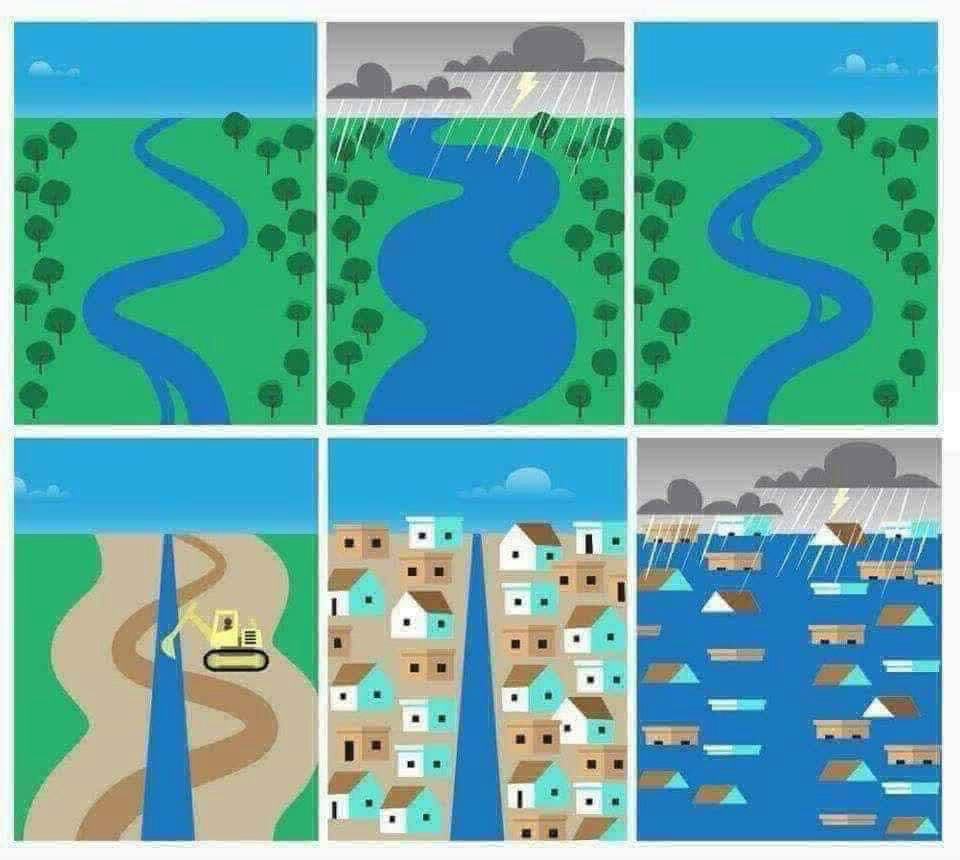Walkable streets, cleaner air, cleaner water in our rivers, cooler temperatures in our city, park-like spaces in walking distance to where we live, locally grown organic food, colorful birds and butterflies, increased local water supply that reduces our region’s dependence on imported water. We can improve carbon sequestration even in our own local landscapes. These all seem like big visions. Yet these are all attainable through simple choices in our neighborhoods and communities, to thoughtfully unpave spots, grade earth, and grow native and edible plants to provide even some of these benefits. The more people who get involved, the more spaces we convert to green infrastructure, the more impact we can have.
Small changes that may require relatively little investment can have significant collective impacts on water resources. These small changes can also add up to significant benefits in quality of life, air quality, cooling, sequestration of carbon and other greenhouse gasses, and habitat, among other benefits.
We might feel that in our densely built urban neighborhoods, there might appear to be hardly any new space available for parks in a traditional sense. At the same time, our cities are full of small overlooked spaces: spaces between buildings, in street parkways and medians, in parking lots, and yards. Many of these spaces, if designed to serve as green infrastructure, whether by moving earth around to collect and store rainwater, or by housing a tree that can cast shade. By using our creativity, we can imagine how many small spaces in our everyday urban landscapes that already exist can add up to create park-like spaces where traditional parks may not exist, and to provide food, shade, and places to socialize outdoors.
In fact, it is exactly in these small places distributed throughout every neighborhood, where we have the power to ensure that we have clean water in our local rivers and streams. By helping rainwater soak into local landscapes (where it can provide water to plants), we improve the quality of water in our streams and rivers.
Infiltration to groundwater is an important benefit for water supply, as in the central basin forebay parts of the Gateway Cities. However, even when water cannot drain to an underground aquifer, healthy soil can increase water infiltration and hold up to 20 times its weight in water (California Department of Food and Agriculture 2018). This is significant for reducing water needs for irrigation, improving water quality, as soil and plants are effective at filtering and even breaking down pollutants, and even impacting flooding by reducing peak flows. Cities across the US have been demonstrating the effectiveness of investments in distributed, nature-based solutions from Portland and Seattle to New York, Chicago, Philadelphia, and Tucson, AZ. Triple-bottom line studies in Philadelphia and New York have outlined the long-term financial benefits of an integrated approach to water management including projects in rights of way and on private properties, and monitoring studies on the ground in New York and Portland show actual benefits significantly exceed modeled expectations (NY 2014, 2016, PD 2010, 2013). The first monitoring studies ongoing in unincorporated Gateway Cities communities show promising results for infiltration capacity.
Green landscapes help us improve air quality. When our urban landscapes are layered with diverse vegetation type- trees, shrubs, and groundcovers- local concentrations of nitrogen dioxide can be reduced as much as 40% and particulate matter by as much as 60% (Pugh et. al. 2012).
Green infrastructure lowers temperatures—by creating shade (and by transpiring moisture), trees and plants also lower the temperature of our hot urban landscapes.
Nature makes our urban environment friendlier. Studies on nature in our urban environments benefits health, healing, and even improves how people interact. When public spaces become more park-like, they attract more activity, and enable our streets to become safer as well.
Planting trees is often mentioned as a means of carbon sequestration to combat climate change. But did you know that healthy soil can also sequester carbon? Globally, soils store more than three times the carbon in the atmosphere (Rattan 2007, Batjes 1996). This means that by building healthy soils in our own yard or garden, you are contributing to carbon sequestration!
These are all benefits that nature brings to our cities, and when these opportunities are multiplied across the many spaces in our everyday environment that are underutilized, they can add up in impact.
This website shows how green infrastructure is an important and cost-effective component of diversified stormwater management that will contribute to our region’s water sustainability. We work on projects and share information to support understanding of how green infrastructure can improve your own neighborhoods, schools, and communities, and connect with resources to collectively advocate for such changes. In this way, small steps may add up to big positive change.
Case Studies
Philadelphia
City of Philadelphia Water Department Office of Watersheds. 2011. Amended Green City Clean Waters: The City of Philadelphia’s Program for Combined Sewer Overflow Control.
Stratus Consulting. 2009. A Triple Bottom Line Assessment of Traditional and Green Infrastructure Options for Controlling CSO Events in Philadelphia’s Watersheds. City of Philadelphia Water Department Office of Watersheds.
Portland
City of Portland Bureau of Environmental Services. 2013. 2013 Stormwater Management Facility Monitoring Report.
Entrix. 2010. Portland’s Green Infrastructure: Quantifying the Health, Energy, and Community Livability Benefits. City of Portland Bureau of Environmental Services: Portland, OR.
New York
NYC Department of Environmental Protection. 2016. Green Infrastructure Performance Metrics Report.
NYC Department of Environmental Protection. 2014. Report for Post-Construction Monitoring Green Infrastructure Neighborhood Demonstration Areas.
NYC Department of Environmental Protection. 2010. NYC Green Infrastructure Plan: A Sustainable Strategy for Clean Waterways.
Small changes that may require
relatively little investment can
have significant collective impacts
on water resources. These small
changes can also add up to
significant benefits in quality of
life, air quality, cooling, sequestration of carbon and other greenhouse gasses, and habitat, among other benefits.
brad zarnett biomimicry institute cme

Sources
Batjes, N.. 1996. Total Carbon and Nitrogen in the Soils of the World. European Journal of Soil Science, 1996 vol. 47 (2). British Society of Soil Science and the National Societies of Soil Science in Europe.
California Department of Food and Agriculture. 2018. Healthy Soils Initiative.
Cooley, H., and R. Phurisamban. 2016. The Cost of Alternative Water Supply and Efficiency Options in California. The Pacific Institute: Oakland, CA.
Hevesi, J.A., and Johnson, T.D.. 2016. Estimating spatially and temporally varying recharge and runoff from precipitation and urban irrigation in the Los Angeles Basin, California: U.S. Geological Survey Scientific Investigations Report 2016–5068, 192 p.
Mika, K., Gallo, E., Porse, E., Hogue, T., Pincetl, S., Gold, M. 2018. UCLA Institute of the Environment and Sustainability, UCLA Grand Challenges, Colorado School of Mines.
Pugh, T., A. MacKenzie, J. Whyatt, and C. Hewitt. 2012. Effectiveness of Green Infrastructure for Improvement of Air Quality in Urban Street Canyons. Environmental Science and Technology 2012, 46 (14). Washington, DC: American Chemical Society.
Rattan, L.. 2007. Carbon Sequestration. Philosophical Transactions of the Royal Society B Biological Sciences. The Royal Society.
The River Project. 2018. Measuring the Benefits of Distributed, Nature-Based Stormwater Projects.
The River Project. 2018. Water LA 2018 Report.
US Department of the Interior Bureau of Reclamation and County of Los Angeles Department of Public Works Los Angeles County Flood Control District Watershed Management Division.(November, 2016). Los Angeles Basin Study Summary Report.
Made with ❤️ by TreeStack.io
